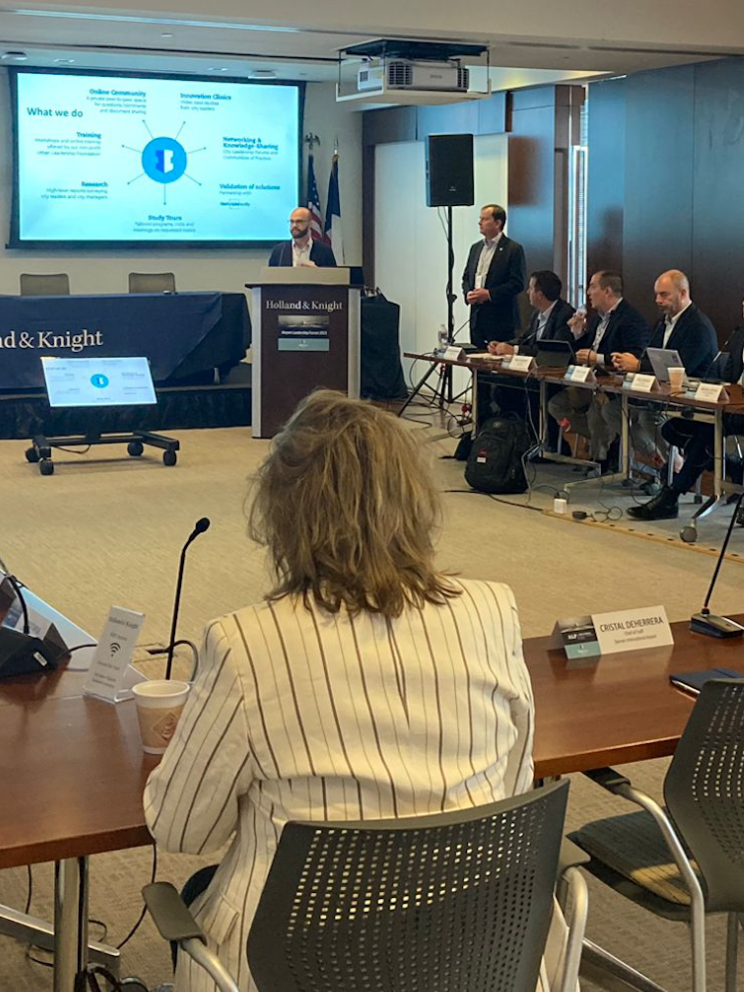
Photo: Joseph Farsakh, Helios
Meet the tech company bringing AI to every city hall in the US
18 November 2025
Cities across the US are hitting a turning point: how to put artificial intelligence to work inside government itself. For Joseph Farsakh, Co-Founder and President of Helios (pictured above), the issue is as much about technology as it is about trust.
“AI isn’t just about smart infrastructure and sensors in traffic flows,” Farsakh said. “The advantage for cities and counties comes from rethinking how government operates. It has to be about leveraging AI tools in how we govern, clarify policy, and earn the confidence of our communities.”
The cost of falling behind
The risks of inaction are not abstract. They hit both city budgets and citizens directly. Municipalities and counties that fail to modernise with AI-native infrastructure can miss out on millions in federal, state, and even foundation grants.
“The federal government and states launch hundreds of funding programs every year. Securing them often requires quick action and more notably, policy intelligence,” Farsakh said. “If your processes are still manual and disconnected, you’re leaving opportunities on the table.” That burden, he added, falls heaviest on smaller and mid-sized cities.
Proxi, the platform that Farsakh is scaling with his co-founders, has deep research and regulatory intelligence capabilities that can be used to streamline reporting and map the very stakeholder networks that are the backbone of intergovernmental affairs and potential funding opportunities.
“Without pointing tools like these at collecting upstream, multi-jurisdictional policy and lawmaking intelligence,” he argued, “valuable dollars that could be serving residents simply slip through the cracks and end up elsewhere.”
From “AI theatre” to real value
Much of what’s branded as AI in government today is more sizzle than substance. Farsakh called it “AI theatre” or flashy bolt-ons to legacy tools that look impressive but don’t solve the real pain points of public administration.
“The heavy lift in government isn’t sexy,” he said. “It’s regulatory tracking. It’s building and maintaining stakeholder maps in order to know which levers to pull. It’s reviewing, interpreting, and responding to Sunshine or FOIA requests that can eat up hundreds of thousands of dollars a year.” Cities like Yakima, Washington, for example, have reported spending upwards of US$500,000 annually on analysing and fielding public records requests.
“That’s taxpayer money,” Farsakh said. “When you augment these tasks with AI that’s purpose-built for government workflows, you free up staff hours for higher value work, preempting consequential policy shifts, without increasing your OpEx.”
Leveling the playing field
For Farsakh, the conversation isn’t just about modernisation, it’s also about governmental equity and outcomes. Larger cities often have the resources to pilot emerging technologies, while smaller municipalities are stuck with yesterday’s tools.
“Our goal isn’t really to automate,” Farsakh said. “It’s to improve the efficiency, depth, and productivity of government. Every interaction, be it applying for a permit, accessing records, or receiving services, should be faster, clearer, and more reliable for constituents.”
The real test, he added, lies in bold procurement and policy decisions made by city and county leaders today: “If cities and the counties they exist within embrace tools that strengthen capacity and service delivery, AI can narrow divides and build trust. If they don’t, the gap between well-resourced and under-resourced municipalities will only widen.”
“We’re truly standing at a once-in-a-generation crossroads,” Farsakh said. “If we put government at the heart of how we design and implement AI, cities and counties will not only move faster, they’ll move smarter, safer, and with the trust of the people. In a world overflowing with noise, trust is the sharpest edge any institution can wield.”
Brought to you by:







